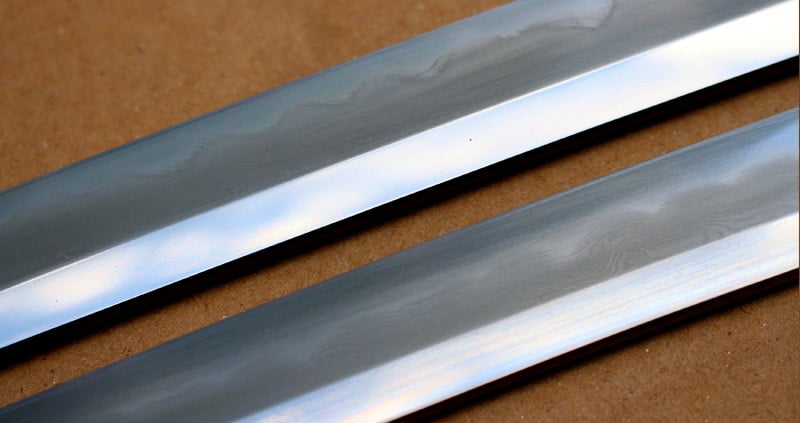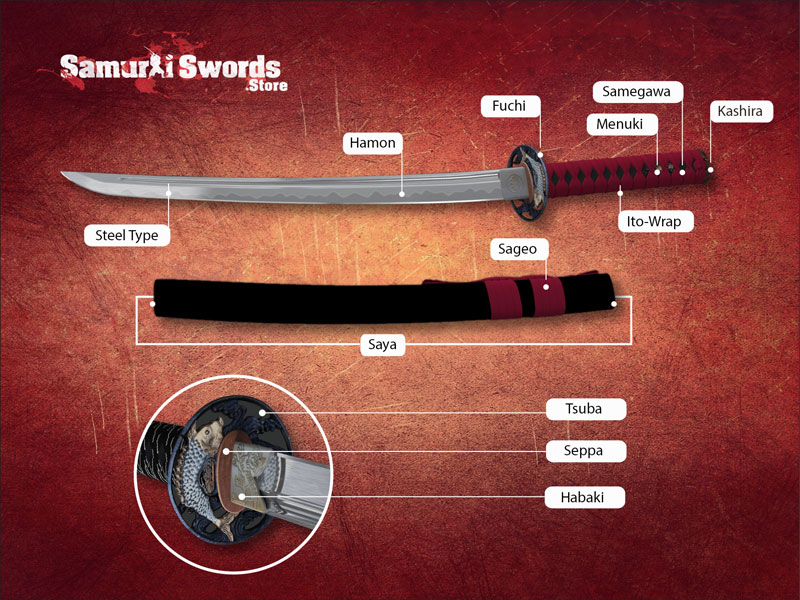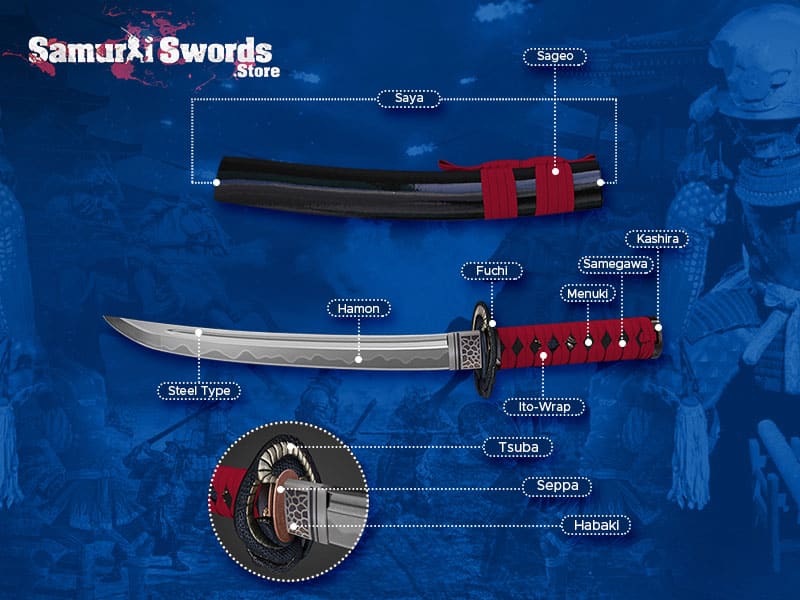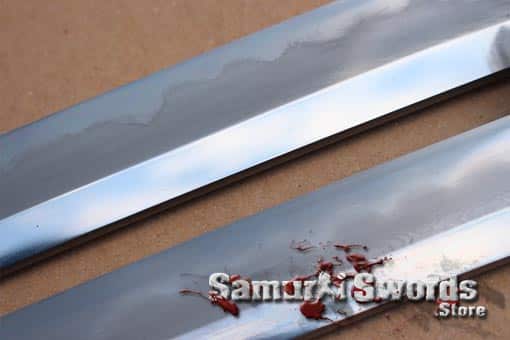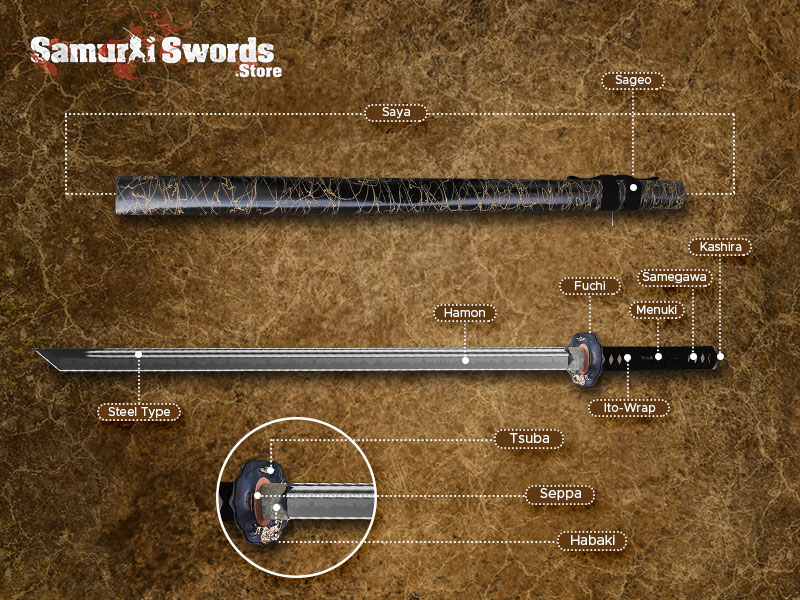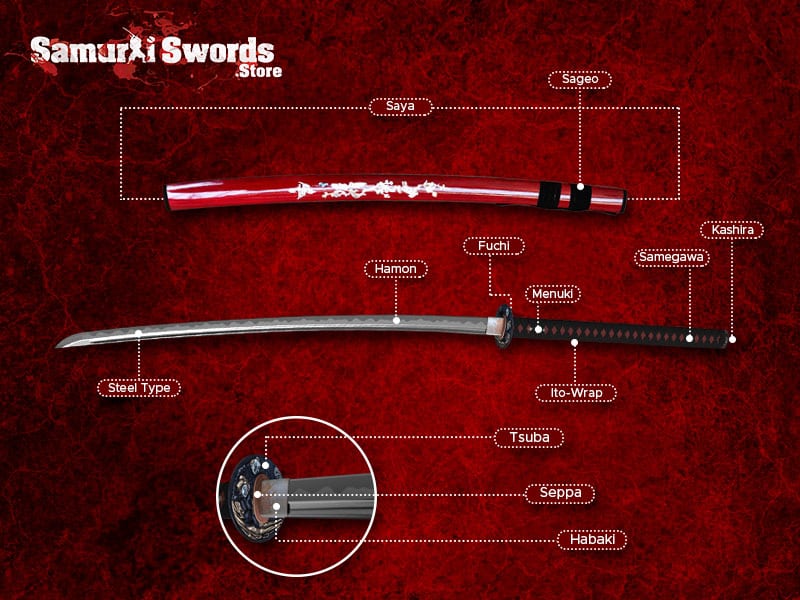Katana Blade
Shinogi
Shinogi – Japanese Blades of Glory
Shinogi is a ridge on the blade running from the yokote to the end of the Nakago. The height and width of the Shinogi Katana show what period the blade was made. This also shows what school the swordsmith came from.
There are societies that held meetings displaying a blade to the participants and having them guess the period from when it was made, school and swordsmith.
The difference between high and low Katana Shinogi is important for those who are students and practitioners of Iaido, Koryu Bujutsu, etc.
Such a ridgeline on the blade and height among other factors are the basis of identifying if it is authentic and accurate for the school for which it shall be used. It must be kept in mind though that there is a blade that does not have Shinogi. These belong to the Hira Zukuri style.
For those who do not have blades, they should recommend the study of Iai. There are some schools that have a variety of blocking and parrying techniques using Shinogi Katana. The difference of height between sane and height refers to a High Katana.
A blade with high appearing Shinogi has a thin kasane. In the time of the invasions, it was uncommon for the kissaki to break. When this happens to a Shinogi reshaping the kissaki is difficult.
Swords during that period have o-kissaki to make it easy to fix the kissaki. It is important to learn how to use the sword with the right Shinogi especially for those who are into martial arts.
Shinogi Sword’s Period Based on the Sugata
It is a ridge running on the side of the Katana closer to the back of the sword than its cutting edge. Sugata, on the other hand, is the shape of the sword.
Throughout the different Japanese periods, there were changes in the way the Katana Shinogi appears.
Late Heian Period. Shinogi-Zukuri tachi was stable and look dignified during this period. The Ha-Watari was approximately 85 cm. This has a narrow mihaba and wide motohaba
- Early Kamakura Period. There is a greater grandeur in the design. This has a larger kissaki and wider saki-haba
- Mid-Kamakura Period. The Sugata is more magnificent than earlier periods. This is when the Shinogi-Zukuri tachi has a wider mihaba
- Late Kamakura Period. This covers the early Nanbokucho period. The ha-watari is 90 cm long and even the chu-kissaki is long. The sugata has a grand appearance
- Mid Nanbukucho period. It was during this period when the Katana Shinogi are long and appears exaggerated. Some odachi are even 120 cm
- Late Nanbukucho period. There were some exceptional swordsmith who created sugata like that of the Kamakura swords
- Early Muromachi period. The shape of the Katana is similar to that of the tachi. Shinogi measures about 75 cm in length
- Mid-Muromachi period. This is the period when this part was shorter than for those swords created in previous periods
- Late Muromachi periods. During this period the length was 60 cm
- End of the Muromachi period. The parts were 73 cm length


